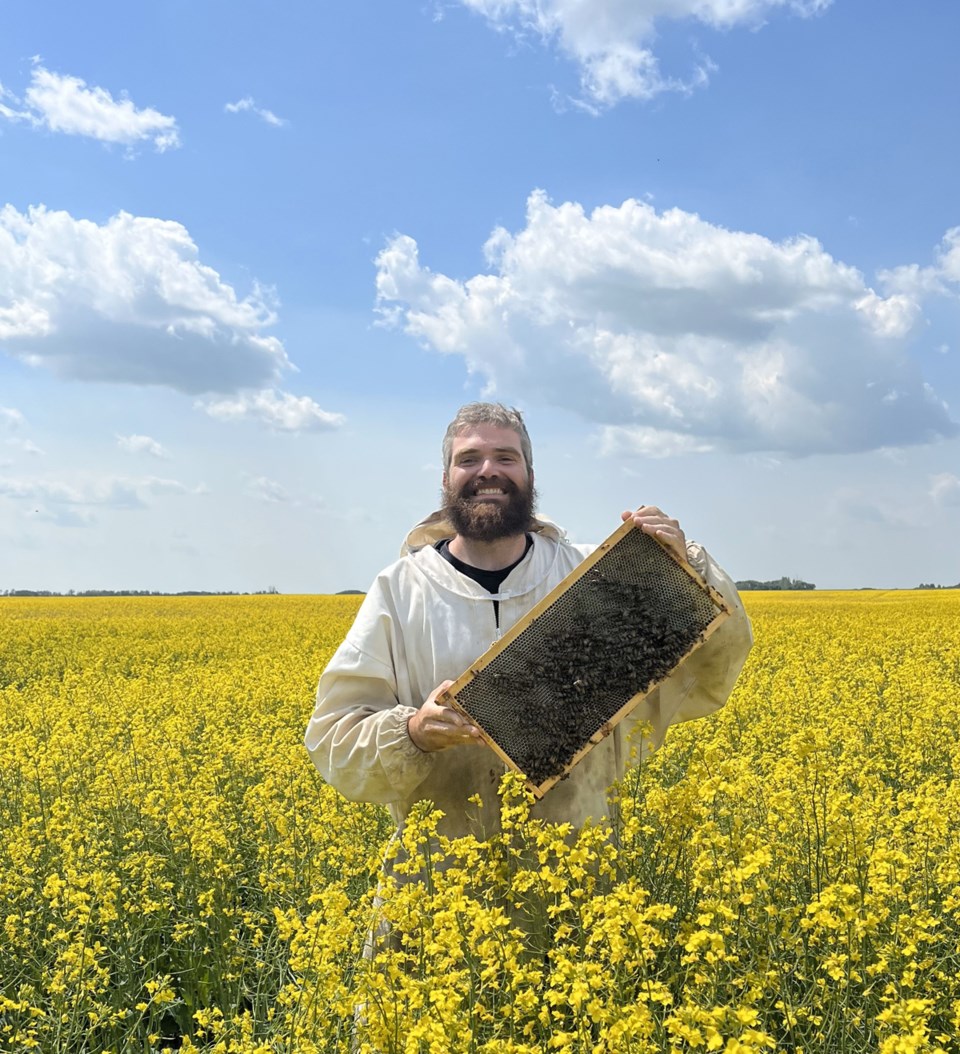YORKTON - Canola is the key crop in terms of farm returns in Saskatchewan.
To attain a good crop though the flowers need to be pollinated and that work is typically carried out by the humble honey bee.
“There’s a relationship between honey bees and canola. A very good relationship,” said Marcelo Camilli, a Brazilian researcher currently in Saskatchewan studying the relationship.
“What we see here is bees flourish in canola.”
Camilli said it is estimated honey 70 per cent of the honey produced in Western Canada comes from canola.
And the pollinating service by honey bees can increase the canola yield by an estimated $1.5 billion.
But what happens when farmers need to apply pesticides to their canola? Does it impact the health of honey bee hives? Does it impact the honey produced?
“What is the safe dose range for honey bees?” asked Camilli.
At present Camilli said there simply isn’t the research to know for sure.
“We don’t have large scale data,” he told Yorkton This Week.
Answers to such questions are what a team of international researchers are looking for in a three-year study initiated this summer.
The study is being carried out with bees established at 20 sites across Saskatchewan, 15 in canola stands and five in boreal forest sites, the latter as a control. Sites include five that spread from Grenfell to Kamsack in east central Saskatchewan.
“It’s the largest project in all of Canada,” said Camilli, during a recent stopover in Springside. The team is staying with Kenn and Nancy Wood as they work in the local area.
The canola fields, provided in cooperation with producers, will be managed normally, said Camilli, so should a crop protection product need to be applied it can be as normal, although farmers are asked to complete a questionnaire covering variety grown, seed treatments used, and chemicals applied.
Camilli explained the researchers will be measuring the levels of pesticide residue in the bees themselves, the pollen they collect, the honey produced and in the soil of the fields.
While the main focus is the honey bee, the project will also be monitoring native, wild pollinators as well. While currently there does not seem to be great concern with pesticide application impacting honey bees from apiarists, the study will provide some much-needed data.
“We’ve come to see the real situation,” said Serbian researcher Uros Glavinic.
The international team including USask students Erin Baril and Debby Peng was drawn together because of a common interest in the honey bee.
“The bee research world is quite small, and people know each other,” said Glavinic.
Each person brings their own skill set to the project.
“All of us have some special side,” said Glavinic, who is focused on bee genetics.
Each has practical beekeeping experience too.
For example Camilli began beekeeping with his grandfather, which inspired him to pursue biology, and researching honeybees was a natural extension of his interests. As a result, he completed his Masters and PhD, both focused on honeybees.
Dr. Sarah Wood, who grew up in Yorkton, oversees the project. Wood holds the position of USask Pollinator Health Research Chair at the Western College of Veterinary Medicine (WCVM). She is also an associate professor in the WCVM's Department of Veterinary Pathology and is board certified with the American College of Veterinary Pathologists (ACVP). Wood's research interests include infectious diseases of honey bees, pesticide risk assessment for pollinators, quantifying pollinator contributions to agricultural productivity, and developing honey bees as experimental models for human and animal disease.
The team is expecting to release primary data after this year’s cycle is complete, and then in each subsequent year of the project.
The large scale, multi-year project is possible through a number of funding and co-operating groups, said Camilli, including BASF SaskCanola, Saskatchewan Beekeepers Development Commission, Mitacs a non-profit national research organization, and the University of Saskatchewan.





